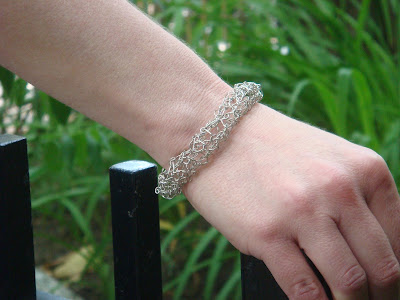I'm knitting a lot of socks at the moment - even more so than usual - because I'm prepping for my Sock Summit classes.
What's fun about this picture is that it shows that I'm willing to knit socks in a variety of ways: top-down and toe-up, on dpns, 2 circs, magic loop and a teeny-tiny circular needle.

In the picture, from the top:
-2 at a time, top down on two circs, in Briggs & Little Tuffy. The colours aren't sexy, and it's not the softest stuff in the sock drawer, but these will be just the ticket come February, in my boots. I'm using a bamboo and a metal circ so I can easily tell them apart. I cast them on a while ago, and am making slow progress as they're an excellent demo in my Two Socks at the Same Time (the easy way) class. They are 3.5mm needles, both very old, but I think one is a Clover and the other is likely an Aero.
Middle row, on the left:
-Colinette Jitterbug, top down, on my beloved 2.5mm 6 inch Signature needles. Of the four, this is my favourite needle configuration, and these are my favourite needles. The yarn is a tightly twisted 100% merino with lots of bounce. The stripes are very effective, I think.
Middle row, on the right:
Koigu KPPM in plain old black, top down, for Project Black Sock, on a 2.5mm 8 inch circular Addi needle. They don't see to be easy to find, but they are worth trying out, these tiny circs. No ladders at all! They take a bit of practice - I found I had to adjust my hand position to hold the needle without cramping - but they are really rather amazing for the autopilotiest of autopilot socks.
And in the bottom row:
A toe up on Knit Picks 32 inch 2.5mm metal circular for magic looping. A test of my adjusted toe-up sock template (more on that later). The yarn is some discontinued Online in the "Butterfly" series - a bargain basement find!
The amazing thing is that this isn't all of the sock projects I have on the go. There are five right there.
In addition, I have on the go two sets of my one-sock-inside-the-other, a plain black sock in Regia, and another of the black Koigu socks.
That's eleven. 11 socks on the needles right now. I mean, I do have an excuse, but this does still seem fairly extreme.










